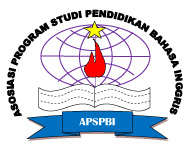Grammatical Errors of Google Translate in Translating Narrative Text in Indonesia to English
Abstract
Keywords
References
Alhaisoni, E., & Alhaysony, M. (2017). An Investigation of Saudi EFL University Students’ Attitudes Towards the Use of Google Translate. International Journal of English Language Education, 5(1), 72. https://doi.org/10.5296/ijele.v5i1.10696
Cancino, M., & Panes, J. (2021). The impact of Google Translate on L2 writing quality measures: Evidence from Chilean EFL high school learners. The system, 98, 102464. https://doi.org/10.1016/j.system.2021.102464
Daulay, S. H., & Octa, M. (2021). “The Effect Of Metacognitive Strategy On Students Grammar Mastery”. VISION, 17(1).
Daulay, SH., (2019). Language and Society. Medan: Lembaga Peduli Pengembanan Pendidikan Indonesia.
Daulay, S. H. (2019). Students’ Reading Comprehension Achievement in Narrative Text Through Team Practice Technique. International Journal on Language, Research and Education Studies, 3(3), 494–506. https://doi.org/10.30575/2017/IJLRES-2019091215
Kembaren, F. R. W. (2018). Translation Theory and Practice. Accessed January, 19th 2022 http://repository.uinsu.ac.id/5251/
Kembaren, F. R. W. (2019). A guide for translators ways to translate different types of text. Medan: Perdana Publishing.
King, K. M. (2019). Can Google Translate Be Taught To Translate Literature? A Case for Humanists To Collaborate in the Future of Machine Translation. Translation Review, 105(1), 76–92. https://doi.org/10.1080/07374836.2019.1673268
Kurniasih, I. (2017). An analysis of grammatical errors of using Google Translate from Indonesia to English in writing Undergraduate Thesis abstracts among the students’English Department of IAIN Metro in the academic year 2016/2017. 1–69.
Lee, S. M. (2020). The impact of using machine translation on EFL students’ writing. Computer Assisted Language Learning, 33(3), 157–175. https://doi.org/10.1080/09588221.2018.1553186
Munkova, D. et al. (2021). Product and Process Analysis of Machine Translation into the Inflectional Language. SAGE Open, 11(4). https://doi.org/10.1177/21582440211054501
Nurmala, D., & Dewi, R. S. (2018). An error analysis of grammar of Google-translate translation results in English text 1,2. Prosiding Seminar Nasional Hasil Penelitian 2018, 2014.
Tsai, S. C. (2019). Using google translate in EFL drafts: a preliminary investigation. Computer Assisted Language Learning, 32(5-6), 510–526. https://doi.org/10.1080/09588221.2018.1527361
DOI: 10.55215/jetli.v5i2.7616
 Abstract views : 483
Abstract views : 483
Refbacks
- There are currently no refbacks.
Copyright (c) 2023 Journal of English Teaching and Linguistics Studies (JET Li)

This work is licensed under a Creative Commons Attribution-NonCommercial-ShareAlike 4.0 International License.



